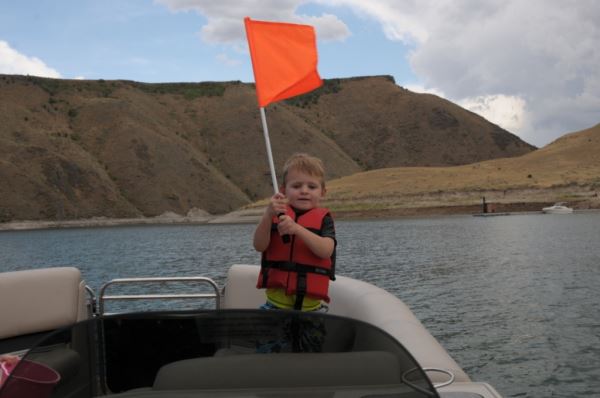
If you just can’t keep your knees from shaking with the anticipation of heading out on the water for a day of splash and fun, you’re not alone. The thought of summer breezes coming across the waves and launching out of the hole is enough to get any water enthusiast’s heart pounding. Many of my memories involve out-takes of learning to water ski.
The first time my friend coaxed me into strapping on a set, I was completely naive about the experience that I was about to have. After giving me a brief run down of the basics (none of which I really felt confident in my understanding of), he screamed, “hit it!” Without knowing what that meant, I was quickly launched out of my skis, forgetting his quaint advice about just pulling myself up like standing from a chair, and commenced being dragged around the lake at speeds that felt abnormally painful.
I held on for dear life because letting go was counter intuitive I guess. Plus, my white knuckles were locked on to that grip like the jaws of a rabid dog. He claimed to have told me to let go of the rope upon falling, but if he did, I didn’t remember. After what seemed like 10 minutes, the boat came to a slow stop and I was left bobbing, soggy, and confused in the water, not at all understanding the appeal of the sport. It took awhile to get the hang of it. I did, however, learn a valuable lesson about the importance of being knowledgeable and prepared before trying something that involves speed and power.
There are few things in life more enjoyable than a day of water-skiing with our friends or watching the expressions on our kids’ face as they cling to an inner tube being pulled behind the boat. But, if one thing can ruin fun faster than an impending thunderstorm, it would have to be an accident.
I doubt I’d look back on my situation with such nostalgia had I not been wearing my lifejacket. I gave it no thought really. I just strapped it on because that was what I was supposed to do. In retrospect, there are probably a lot of times that boaters give it no thought, forget to wear a lifejacket and are left in dire straits. No one likes to think about it, or talk about it, except for those “over protective” mothers who remind their children continually to wear their life jacket and practice caution, hoping it will stick.
We should take a moment to thank our mothers for reminding us to be careful. And for their efforts, a friendly reminder of what constitutes safe boating practices is warranted. First and foremost:
Lifejackets Save Lives
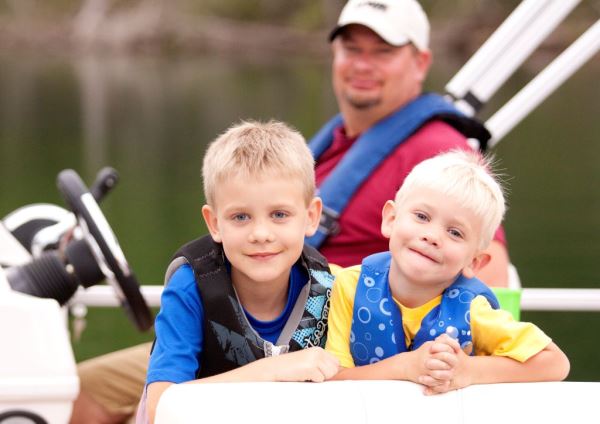 According to a study published by the USCG, among the 651 drowning deaths that took place in 2018, 85 percent of the individuals were not wearing a life jacket. Most of us do an adequate job of being certain our kids are safe.
According to a study published by the USCG, among the 651 drowning deaths that took place in 2018, 85 percent of the individuals were not wearing a life jacket. Most of us do an adequate job of being certain our kids are safe.
Overall, the wear rate for children 17 and under is 67.5 percent, the third highest rate since the study began in 1999, but only 9.3 percent of adults 18 and older wear a lifejacket. So, what would our kids do in an accident if we didn’t make it out and they were left behind? All boats should at least have PFDs (personal flotation devices) stowed under-seat or elsewhere because it is the law. But can you honestly say that you’d have time to get them out for everyone and put them on in time if an accident occurred? Nowadays, there are so many comfortable, non-restrictive options on the PFD scene. An inflatable, for example, is hardly noticeable until you need it. Take some time to check out what’s new and make a commitment to optimize your safe boating season.
Learn To Swim
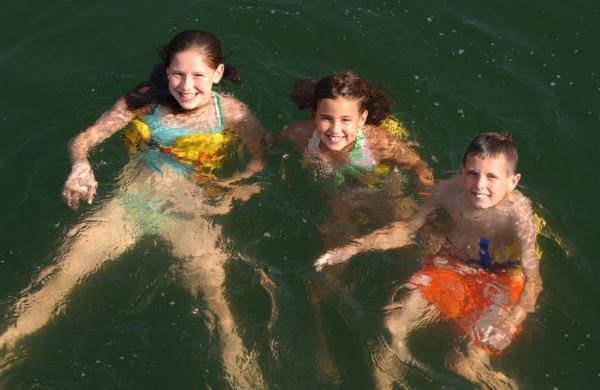 Even if you aren’t an expert swimmer, take the time to get acquainted with some simple survival methods. Your chances for survival if you find yourself overboard are likely to increase exponentially (especially if you’re wearing your lifejacket). Learn survival floating to help you conserve energy if you find yourself in the water for an extended period of time. Although instinct tells us to keep our head above water at all costs, panic isn’t the most effective way to conserve energy if caught out in open water.
Even if you aren’t an expert swimmer, take the time to get acquainted with some simple survival methods. Your chances for survival if you find yourself overboard are likely to increase exponentially (especially if you’re wearing your lifejacket). Learn survival floating to help you conserve energy if you find yourself in the water for an extended period of time. Although instinct tells us to keep our head above water at all costs, panic isn’t the most effective way to conserve energy if caught out in open water.
In a resting position chin down, let your body float with your knees tucked into your chest. This position serves a dual purpose by conserving both energy and heat. The exhaling position of survival floating requires swimming motions with your arms until you surface with your head above water to exhale and breath calmly and comfortably for a few minutes, then return to the resting position.
Don’t Drink And Boat
It’s no secret that alcohol can impair your judgment, balance and coordination. For all of the reasons that you should not drink while operating a vehicle, you should not drink while boating. Alcohol use is the leading contributing factor in fatal boating accidents; it was listed as the leading factor in 17 percent of boating deaths in 2018.
On the water, heat coupled with the motion of the boat can be even more disorienting than you may anticipate. Additionally, dehydration is a tremendous concern if you are replacing water with alcohol.
Water Toy Safety
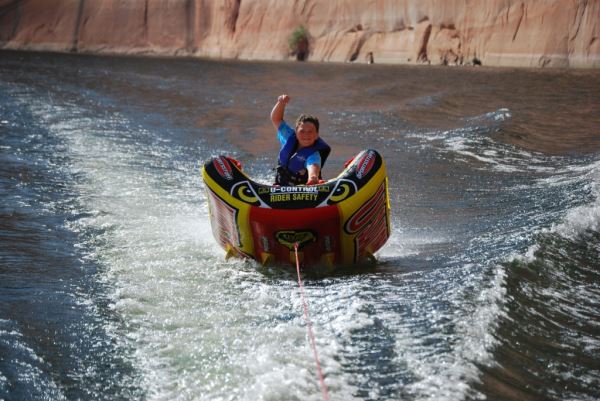 With a few safety tips fresh in your mind, you’ll be a lot more likely to have a safe and fun water-skiing or wakeboarding adventure. The size of the water area that you intend to ski on determines the number of boats that can be on it at once. Each boat should be able to maintain a 200-foot wide “ski-corridor” (100 feet on either side of the boat). The entire course should be 2,000 to 3,000 feet long. Its depth should be at least 5 to 6 feet of obstacle-free water to avoid dragging bottom on starts or hitting submerged obstacles during a fall.
With a few safety tips fresh in your mind, you’ll be a lot more likely to have a safe and fun water-skiing or wakeboarding adventure. The size of the water area that you intend to ski on determines the number of boats that can be on it at once. Each boat should be able to maintain a 200-foot wide “ski-corridor” (100 feet on either side of the boat). The entire course should be 2,000 to 3,000 feet long. Its depth should be at least 5 to 6 feet of obstacle-free water to avoid dragging bottom on starts or hitting submerged obstacles during a fall.
The U.S. Coast Guard recommends adhering to these safety tips to ensure you’ll have an accident-free day of sport.
1. Always have an observer in the boat. This is a legal requirement in many states. The boat driver cannot watch the skier and operate the boat safely at the same time.
2. Always wear a Coast Guard approved Personal Flotation Device (PFD) designed for water skiing. Ski belts are not recommended. Your approved PFD will help keep you afloat.
3. Never ski in rough water. High waves or a choppy sea will prevent the boat from maintaining a steady course and speed.
4. Stay clear of congested areas and obstructions. Water-skiing requires a lot of open area.
5. Don't spray or "buzz" swimmers, boats or other skiers. Such stunts are dangerous, discourteous and could cause an unintentional collision.
6. Never ski after dark. It is hazardous and illegal. Any boat traveling fast enough to tow a skier is traveling too fast to navigate safely at night.
7. Never water-ski while under the influence of alcohol or drugs. Such activity is extremely dangerous because of the impairment to your judgment and ability to respond. A recent study conducted with expert skiers who were deliberately intoxicated indicated that even their ability to ski was dramatically reduced.
8. Use hand signals between the skier and observer. Agree before you start what each signal means so there is no confusion at a critical moment.
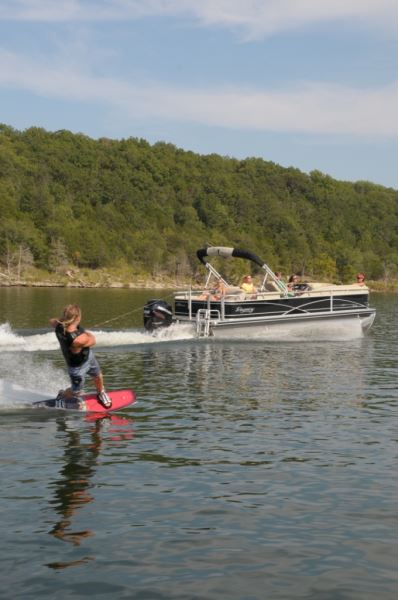
Sometimes skiers cannot help falling down, especially when just learning. If you are navigating the boat, pick up a fallen skier as soon as possible since floating skiers are difficult for other boats to see. It’s important to use an orange caution flag to let others in the area know that you have someone in the water.
As the skier, if possible, pick up a ski and hold it up to make yourself more visible and recognizable in the water. As the operator reduces speed, the spotter should direct him to return to the fallen skier, always turning off the engine on approach.
If hand signals are used, the observer should know right away whether the skier is alright or injured and in need of immediate assistance. If the skier is injured, but is able to grasp and hold a line, maneuver the boat upwind and close to the injured person and throw him a line to gently pull him in.
If the skier is not capable of holding a line, let the boat drift toward him, always keeping the operator’s side to the victim. Never retrieve a person from the water with the engine running. The last resort should be to put a swimmer in the water to retrieve the skier.
Boating Courses
Boating education is incredibly accessible. Online classes and local education should be easy to find. Several organizations offer boating classes including the U.S. Power Squadrons who offers classes all over the country.
Boat Ready
Although this may seem like a no brainer, your boat may not be as ready to make waves as you may think after winter storage. Be sure your vessel is free from fire and safety hazards. Take advantage of the free Vessel Safety Check that members of the U.S. Coast Guard Auxiliary and U.S. Power Squadrons offer. Go to www.vesselsafetycheck.org and click on "I Want a VSC" to find a Vessel Examiner near you. Additionally, triple-check that all of the safety equipment you’ll need is on board and never exceed your passenger or weight limit.
Weather
 Take a few extra minutes to check weather forecasts before you head out for the day. Although it may be sunny and beautiful early, weather can change quickly. Watch for changes in the weather while you are out. According to the National Safe Boating Council, by the time you notice those dark clouds rolling in it’s usually too late to make it to a safe location if you are out on open water.
Take a few extra minutes to check weather forecasts before you head out for the day. Although it may be sunny and beautiful early, weather can change quickly. Watch for changes in the weather while you are out. According to the National Safe Boating Council, by the time you notice those dark clouds rolling in it’s usually too late to make it to a safe location if you are out on open water.
Boating Safety Education Links
www.uscgboating.org/safety/courses.htm
www.usps.org
www.americasboatingcourse.com
www.boater101.com
www.boatus.org
www.boat-ed.com
www.boatsafe.com
www.boaterexam.com

